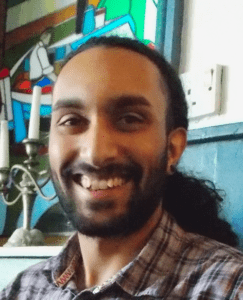Posted By: Kylee Spencer, PhD, Assistant Editor, AJHG
Each month, the editors of The American Journal of Human Genetics interview an author of a recently published paper. This month we check in with Ryan to discuss his recent paper “Genetic heritage of the Baphuthi highlights an over-ethnicized notion of ‘Bushman’ in the Maloti-Drakensberg, southern Africa”.

KS: What motivated you to start working on this project?
RD: Revisionist circles in African anthropology were having important discussions about how we understand ethnicity of past groups in Southern Africa. One big take-home message was that some labels used in historic texts have been mistakenly taken as de facto indicators of ethnicity when the terms were far more recent in origin, stemming from African oral traditions but made ‘concrete’ in colonial records. This coincided with an interesting time in genetics. There are now affordable high resolution genotyping methods, software, and data publicly available. This has made it possible for us to examine a dataset with enough resolution to test the ideas put forward by Africanist anthropologists.
KS: What about this paper/project most excites you?
RD: Personally, I found the unexpected results to be the most exciting part. I thought this would be a rather simple story in that the Baphuthi oral history would easily explain what we see in the genomic data, i.e. the Baphuthi have a genetic signal of admixture of several Bantu-speaking groups. The expected ‘unexpected result’ was that the Baphuthi had higher levels of KhoeSan genetic heritage which we could understand as the result of more recent assimilation of KhoeSan communities. That we found neither of these signals was puzzling and we needed a pause to think about what this meant. It is both an exciting find because it could be something genuinely novel but also a potential can of worms as the interpretation of the outcome was less clear-cut than I anticipated.
KS: Thinking about the bigger picture, what implications do you see from this work for the larger human genetics community?
RD: I would say, tentatively, that the results advocate for a ‘gray area’ in the narrative of the displacement of hunter-gatherers. The narrative has been that the Bantu-language communities migrated *en masse* and displaced the hunter-gatherers but this is rather unlikely. Instead, the earliest Bantu-speaking arrivals may have ended up occupying some cultural and genetic middle ground between what we see today as a KhoeSan and Bantu-speaker dichotomy. The history of the Baphuthi may be an example of what this middle ground may have looked like.
This can be extended to other regions as well – the arrival of agriculture to Europe, the Americas, South-East Asia or India may too have had such middle-ground communities at one point. There is not much work on the Baphuthi people which considers genetics scientifically, so there are many ideas yet to be tested.
KS: What advice do you have for trainees/young scientists?
RD: My advice would be for early career post-docs who had a stumble or two in their career path. Academia is a slow-burn industry. Publications can take a while to get somewhere and that ‘somewhere’ is seldom where you thought it would be. While a publication is still ‘brewing’ you need to keep moving. You’ll need to get comfortable handling many projects at different stages all at the same time: sometimes dreaming up, starting, analysing, troubleshooting and pausing projects all at the same time. It can feel quite chaotic but it gets easier with time.
KS: And for fun, tell us something about your life outside of the lab.
RD: I listen to many podcasts. It’s a great way to keep up with discussions in science and science policy without it feeling like another work activity or eye strain. I also enjoy trying out sustainability-focused innovations like wooden toothbrushes and packaging-free deodorants.
